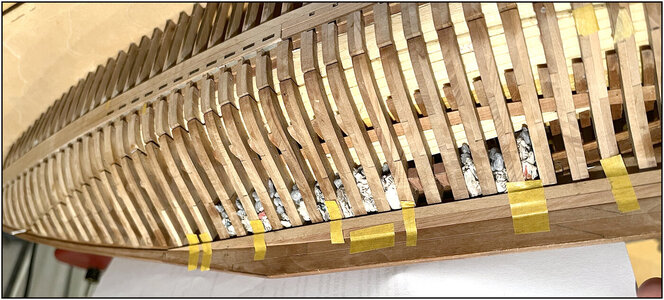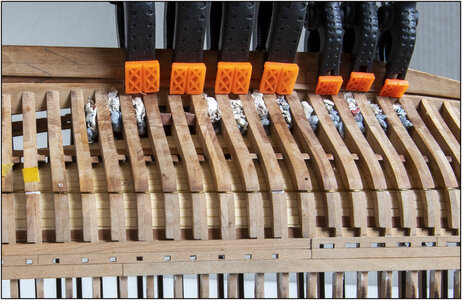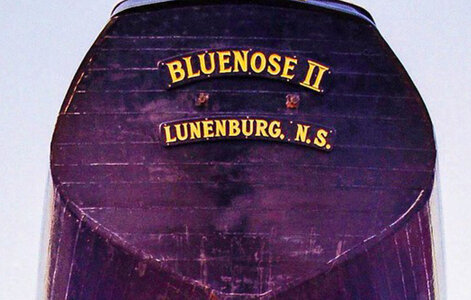Thanxs, Johan. I know the drawing. And indeed, this is the FI-part of my AL-FI.Henk, Peter,
This morning Henk and I met in person and also discussed this intriguing topic. So once home again I checked to see whether or not the "Saga" held some clues and sure it does. Please keep in mind the "Saga" describes the BN II, meaning that the BN I might have a different configuration.
Pages 108/109 give a pictorial indication that the hull's side planks covered the ends of the stern planks, see attached picture.
I'm not certain the wake turbulence argument is driving that configuration, I suspect that that area may be characterized as being wet, terribly wet and the turbulence is just adding to the agony of water intrusion...
On another Bluenose build I've seen the side planks being cut at the stern and the stern planks overlapping the side planks.
I guess it's AL-FI time again, it's your decision; what do you feel comfortable with and what do you want to present.
Have fun!
Johan
View attachment 284721
And a perhaps strange question from me: Why are the planks on the bow not up to the front on the sides of the keel? Why locked up there in the rabbet? And till the deadwood also let in?
At the stern 2 parts of planks comes together. Then there must be choosen for a solution.
But one more thing: on the now oiled planks I did something unorthodox with the treenails. Who knows, may say. Then I tell my FI about that too.
That reminds me of my work, when I switched to the analysis part of my work. That was new for our service and had to be developed.
We started making relation-diagrams to provide insight into the connections between the evidence traces on different crime scenes. This also brought us into contact with the tactical analysts. We did it very differently from them, who are known as the specialists and have been doing it their way for years. And they found ours more understandable. AL-FI was unknown at that time, but deep inside of me ..........
That naughty boy is still inside of me.
Regards, Peter














